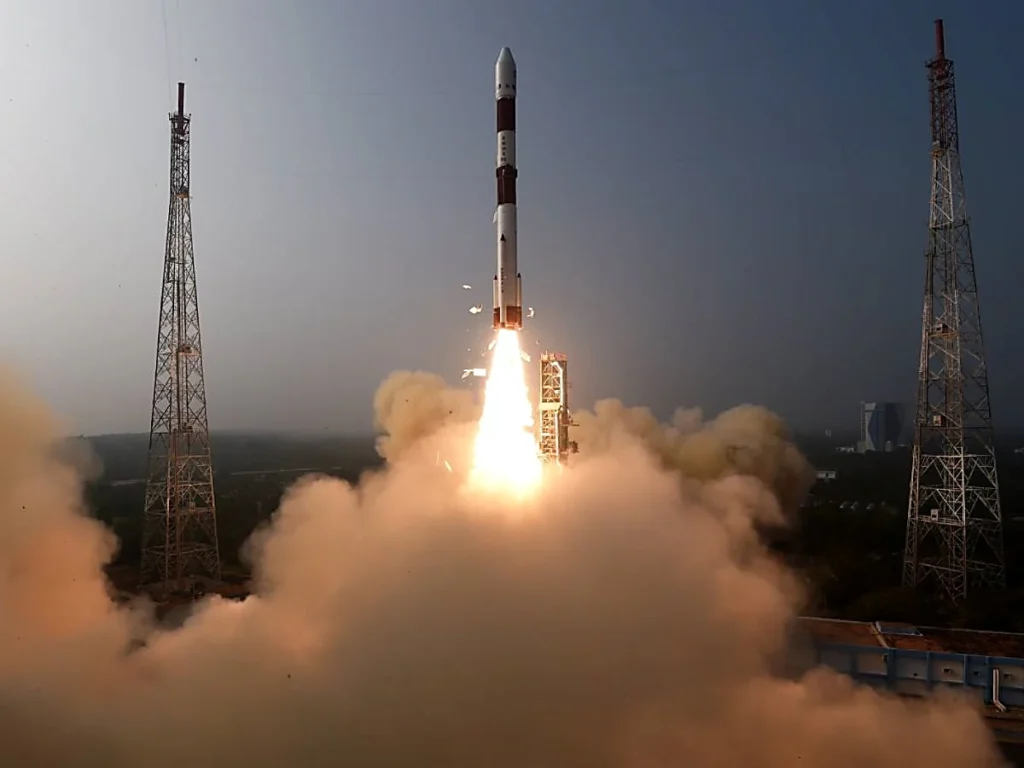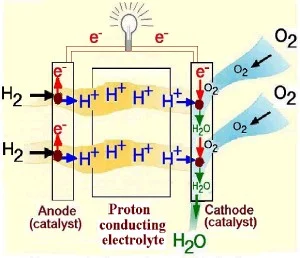The Indian Space Research Organisation (ISRO) recently conducted a successful test of a 100 W class Polymer Electrolyte Membrane Fuel Cell based Power System (FCPS) in its orbital platform, POEM3.
- POEM3 was launched aboard PSLV-C58 (Polar Satellite launch Vehicle) X-ray Polarimeter Satellite (XPoSat) mission on January 1, 2024.
About the Polymer Electrolyte Membrane Fuel Cell based Power System (FCPS):
- The FCPS is a type of fuel cell or electrochemical device that directly converts the chemical energy of reactants (a fuel and an oxidant) into electricity.
- It is built out of Membrane Electrode Assemblies (MEA) which include the electrodes, electrolyte, catalyst, and gas diffusion layers.
- It is developed mainly for transport applications, and for stationary fuel-cell applications and portable fuel-cell applications.
- It is also known as Proton-exchange membrane fuel cells (PEMFC).
- Their distinguishing features include lower temperature and pressure ranges.
- They are a leading candidate to replace the aging alkaline fuel-cell technology, which was used in the Space Shuttle.
Use of Polymer Electrolyte Membrane Fuel Cell Operation in Space:
- It will collect data for designing systems for future missions and provide valuable data on the performance of various static and dynamic systems, contributing to the understanding of the physics at play in space.
Significance:
- Space Station: Fuel cells, exemplified by the FCPS payload, are seen as ideal power sources for India’s proposed space station by 2035.
- Mission Integration: The POEM-3 experiment aligns with the objectives of multiple payloads, emphasizing the significance of FCPS in future space endeavours.
Hydrogen Fuel Cells and their Advantages:
- Hydrogen fuel cells produce electricity directly from Hydrogen and Oxygen gases, emitting only pure water and heat.
- Efficiency: Direct electricity production without intermediate steps makes them highly efficient.
- Emission-Free: With water as the only by product, hydrogen fuel cells are environmentally friendly, ideal for space missions where power, water, and heat are essential.
Applications:
- Vehicle Power: Fuel cells are considered ideal for replacing conventional vehicle engines, offering advantages over batteries in terms of range and fuel recharge time.
- Standby Power Systems: Potential applications extend to powering standby systems efficiently.
Other Technological Advancements by ISRO
- Silicon–Graphite Anode Cells: ISRO has qualified 10 Ah Silicon–Graphite anode-based high energy density Li-ion cells as a lightweight and cost-effective alternative.
Ref: Source
| UPSC IAS Preparation Resources | |
| Current Affairs Analysis | Topperspedia |
| GS Shots | Simply Explained |
| Daily Flash Cards | Daily Quiz |




